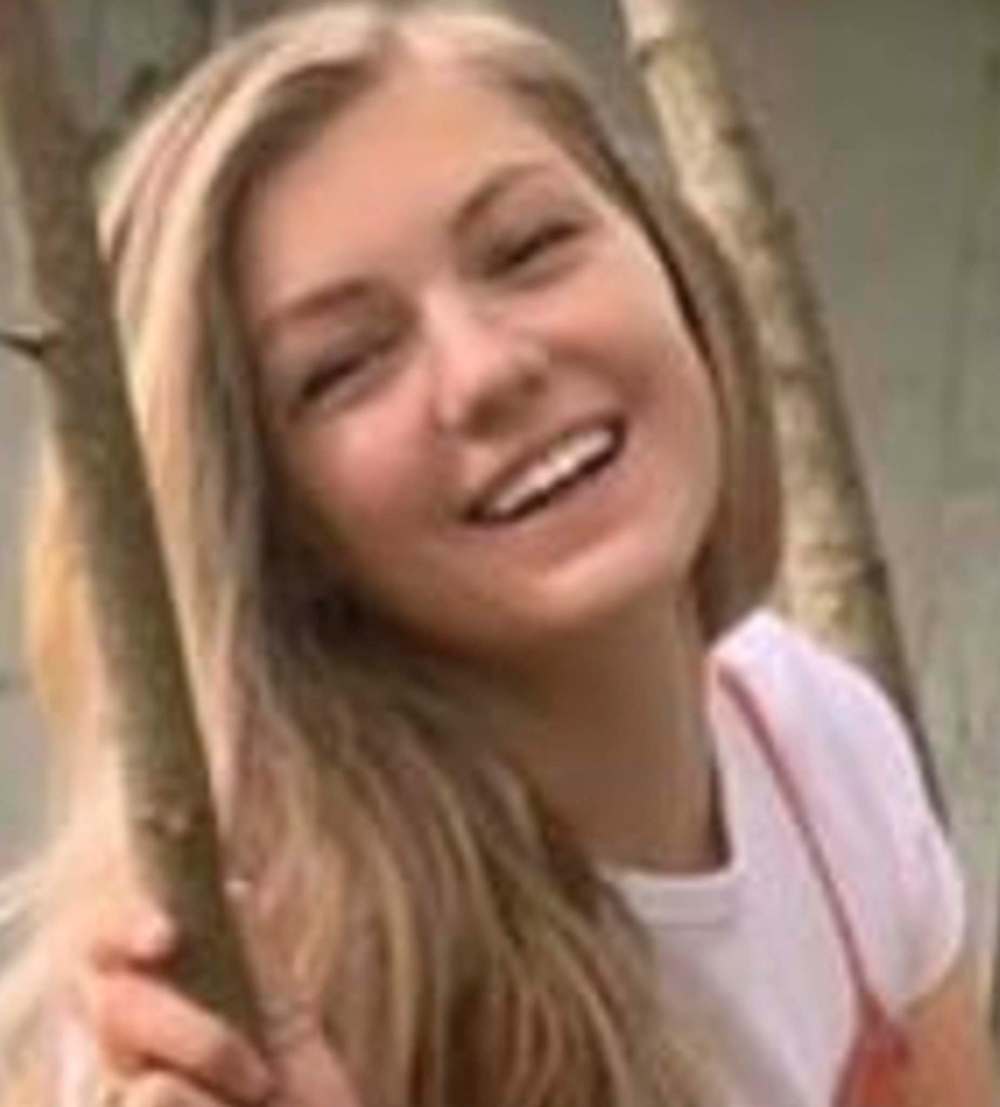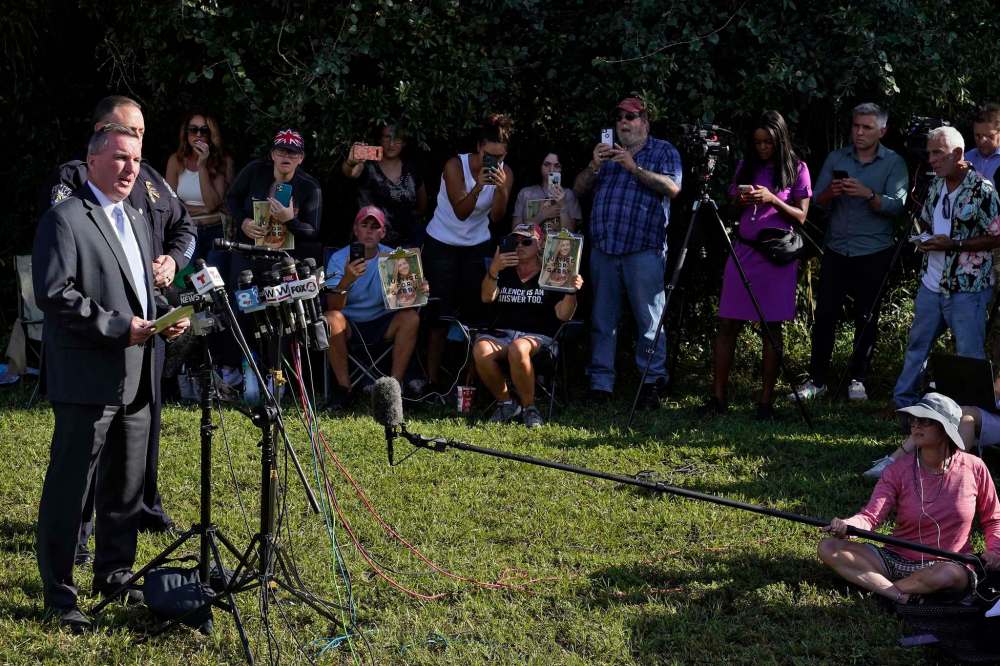Deplorable entertainment tonight Shameless, endless, pointless wall-to-wall 'coverage' of tragic news events transforms raw human suffering into must-flee TV
Read this article for free:
or
Already have an account? Log in here »
To continue reading, please subscribe:
Monthly Digital Subscription
$1 per week for 24 weeks*
- Enjoy unlimited reading on winnipegfreepress.com
- Read the E-Edition, our digital replica newspaper
- Access News Break, our award-winning app
- Play interactive puzzles
*Billed as $4 plus GST every four weeks. Offer only available to new and qualified returning subscribers. Cancel any time.
Read unlimited articles for free today:
or
Already have an account? Log in here »
Hey there, time traveller!
This article was published 22/10/2021 (1229 days ago), so information in it may no longer be current.
As the weeks wore on, and the suspect hadn’t turned up, it seemed increasingly likely the story would end with two bodies, not one. It’s not easy to go on the run, especially when your face is daily being plastered on screens all over the world and law enforcement is combing through your life, and that of your family.
In this age of surveillance and digital everything, it’s not easy to disappear and stay gone while remaining alive.
So on Wednesday, when the FBI announced they had found human remains in a Florida park, and a family attorney said there was a high probability the remains were of Brian Laundrie, charged in connection with the homicide of his 22-year-old fiancée, Gabby Petito, it shouldn’t have come as a surprise to anyone who’d been following the story.

(At the time the remains were found, Laundrie had not been charged with Petito’s killing; he had been charged with fraudulently using one of her bank cards. Still, the basic facts of the case are pretty stark: a young couple went on a van trip, one returned alone with the van and then vanished; the other was found strangled in a national park.)
Yet the probable discovery of Laundrie’s body apparently came as a surprise to many. For more than a month since Petito had gone missing, the internet and some news outlets had been ablaze with theories about where Laundrie could be, who could be helping him and whether he was living off the land or had escaped to Mexico.
On Thursday, the FBI confirmed the remains were Laundrie.
Someday, this social media storm will be studied in university classes. It will join a short list of past cases that drew mass public fixation far beyond what most get. It will reveal a lot about what catches the public’s attention and what goes ignored; but also about how such cases can turn tragedy into circus, and even do harm.

By late September, not long after Laundrie went missing, the media frenzy around Petito’s disappearance reached a ghoulish level. A Reddit community dedicated to the case swelled to more than 150,000 members; on YouTube, a Florida news station held livestreams with anchors who chatted for hours over aerial footage of cops hunting for Laundrie.
“We are doing non-stop, commercial-free, uninterrupted coverage,” one anchor purred, before telling the audience, which was in the thousands, that he and a reporter described as a “senior investigator” would take a break to “rest (their) vocal cords,” but would soon return.
They spitballed theories about where Laundrie could be, who he could be associating with, what he could be doing. Viewers messaged them with questions and comments; a barber messaged to give expert opinion of how fast the average man’s hair grows, so as to imagine what Laundrie might look like after weeks on the run.
“Great insight,” the senior investigator replied.
If the frenzy had been confined to the realm of distant speculation it might have been bearable. It wasn’t. On Reddit, one user reported seeing a man who looked like Laundrie’s father, and even took a photo of that person. Protesters harassed Laundrie’s family at their house; there were many elaborate theories about how they were aiding him.
In this age of surveillance and digital everything, it’s not easy to disappear and stay gone while remaining alive.
Earlier this week, U.S. marshals raided a hotel room in North Carolina after employees reported a man they thought looked like Laundrie. (In fact, other than being young white men with beards, the two bore little resemblance.) When police knocked on the door, the man gave an alias; the cops kicked down the door and arrested him at gunpoint.
It’s not difficult to imagine how that sudden, terrifying confrontation might have had a far worse ending.
Police apologized to the man the same day, but that didn’t stop his life from being thrown up for public consumption. On social media, people openly wondered why the man was using an alias, and about his female companion (“Was it a side chick?”). A tabloid newspaper ran an article about who he is, and where he’d gone to school.
The case had become its own beast, by then. Misinformation soaked everything, and all sorts of grifters tried to get in on the action. A famous “bounty hunter” turned up at the Laundrie family home in front of TV cameras, and acted as if he was hot on Laundrie’s trail. TikTok users got millions of views by asserting doubtful links to the case.
This frenzy demonstrated many things at once: some illuminating, some frustrating.

The first was that, to find someone missing, that sheer volume of attention can work. When Petito was first declared missing, news outlets were quick to pick up the case; within days, a couple had come forward to say they’d seen the van near a camping area in Wyoming’s Grand Teton National Park. They caught it on dash-cam footage.
That tip helped lead authorities to discover Petito’s body, found a short hike from where the van had been parked.
So that’s a good thing to take away from the case, that sharing information can lead to answers, and even to justice. Yet it’s incredibly rare for most missing persons cases to reach that tier of media saturation, especially if the missing person isn’t white, or young or conventionally attractive.
In Wyoming, the same state where Petito was killed, Indigenous people make up just three per cent of the population but one in five homicide victims. The Guardian spoke to the mother of 17-year-old Indigenous youth Kiana Klomp, who vanished in March 2020; she said not one news article had ever been written about her daughter.
That’s not justice.
When advocates for missing and murdered Indigenous women tried to discuss this disparity in threads about Petito, some responses were indignant. Some declared that it was not the place or time to raise awareness: “This is about GABBY,” one person wrote. Others argued that Petito’s case was different for reasons other than race.
So this tragedy, as it unfolded, serves as a lesson and also as a warning. It’s a reminder that when the public does care, it can come together to find answers from silence; and it’s a reminder that we need to do more to ensure that all who are lost have the best chance to be found, and their families to be surrounded with care and with love.
A fundraiser for Petito’s family raised more than US$82,000. One doesn’t begrudge them that. Still, it’s hard not to think how much even a fraction of that amount would mean to a family with few resources, forced to scour Winnipeg for a sign of their own missing child. We’ve seen that story here before, and we will again.
Finally, we come to the warning, of how the glare of mass public attention can compound tragedy.
In the end, a young woman was killed, and the hunt for the man linked to her disappearance swelled and distorted until it was a sea of misinformation and speculation, until it had built a cottage industry of hangers-on trying to grab their own piece of the attention, until innocent people’s lives were caught in the frenzy.
That’s not justice. May all who are missing be given attention; but may the news around their loss never cross over the line between what is real news and heartbreak and horror, and what is someone else’s entertainment.
melissa.martin@freepress.mb.ca

Melissa Martin
Reporter-at-large
Melissa Martin reports and opines for the Winnipeg Free Press.
Our newsroom depends on a growing audience of readers to power our journalism. If you are not a paid reader, please consider becoming a subscriber.
Our newsroom depends on its audience of readers to power our journalism. Thank you for your support.









